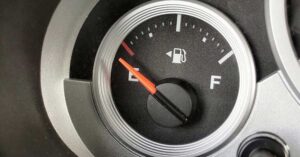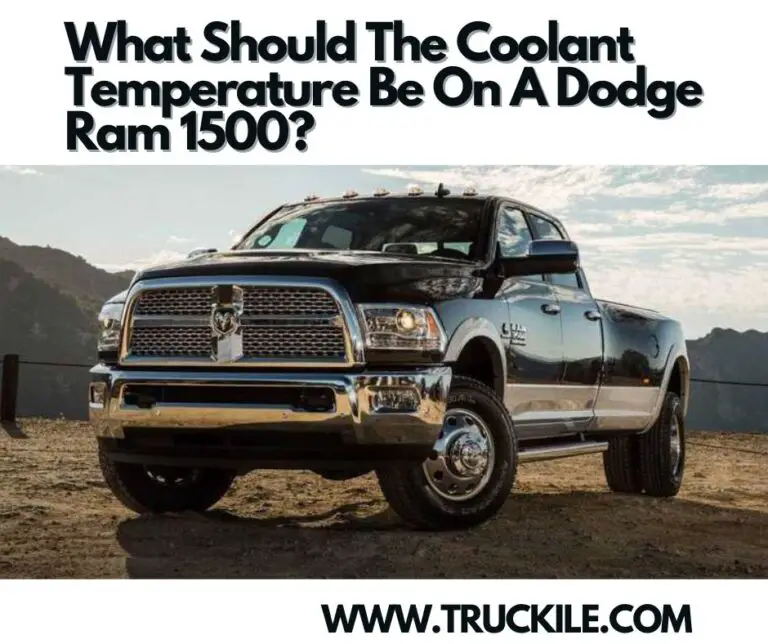How Far Can You Go On 0 Miles To Empty?
Being confused and stranded along the road is something that has happened to more than a handful of motorists. This is likely to surge, from others, the question: “How Far Can You Go On 0 Miles To Empty?”
If you’re among those asking such a question, or something similar, continue reading as we disclose the response and the few things you can do to help improve your fuel economy.
How Far Can You Go On 0 Miles To Empty?
This solely depends on your driving speed and the kind of vehicle you’re driving. Most of the vehicles in the past and present could/can further allow you to go 30 – 50 miles past 0.
If you want to give this a shot, you can simply drive to 0 miles and check how much less than a full tank you put in. Most times, this is half to 1 full gallon.
Product Recommendations:
- Stainless Steel Fuel Tank 8 X 24, 5 Gallon, End Fill, Compatible with Dune Buggy
- Rupse Fuel Sender Unit Boat Fuel Tank Sending Unit
How Far Can I Drive Once The Fuel Light Comes On?
It’s recorded as a common belief that a vehicle can last for a distance of 40-50 miles immediately after the light has turned on — but it’s tricky when it comes to “tracking.”
So, the question is, “will you be able to trust the fuel gauge on your dash?” It’s quite clear that the distance you can cover [drive] before exhausting your fuel is dependent on your driving habits and the road conditions.
In terms of the approximate range on the fuel gauge — that’s if it’s present — it’s determined by the average miles driven. Therefore, it’s less likely to have much accuracy, considering your driving conditions, your current driving conditions.
Again, there’s no specific answer to this question — no fast and hard measurement — because every automaker reserves different amount of fuel after the light is turned on. Generally, it goes between a range of 30 – 50 miles.
Is The 50-Mile Limit Accurate?
According to Matthew Minter from Motor Manual Publisher Haynes, “there’s no statutory amount that should be left in the tank before the warning light comes on.”
You know most drivers have in their belief system that 50 miles is the average range — while they think so, what they should know is, it significantly varies across several models and makes.
It’s advised that you nurture the habit of having in mind that “the low-fuel light is the final warning,” instead of having it on while driving around.
Having brought you in the know of that, below are a few UK’s top-selling cars, and the distance each of them can go after the fuel light is on:
- Chevrolet Silverado – 34 miles
- Volkswagen Golf – 44 miles
- Mazda Miata – 35 miles
- Volkswagen Jetta – 44 miles
- Ford F-150 – 39 miles
- Ford Focus – 42 miles
- Toyota Camry – 43 miles
- Honda Civic – 43 miles
- Honda Accord – 45 miles
- Toyota Corolla – 45 miles
What Are The Dangers Of Driving On An Empty Tank?
 The vehicle begins to pick up debris from beneath the tank, as the level of the fuel gradually gets low.
The vehicle begins to pick up debris from beneath the tank, as the level of the fuel gradually gets low.
This can cause damage to the fuel filter and pump. Also, it can end up damaging the catalytic converter.
One thing that can allow the fuel pump to become dry is when you run out of petrol — which could result in an extra bill, garage bill of $200.
In addition, if you’re using a vehicle that runs on diesel, your engine management system will shut down even before you exhaust your fuel — keeping any “damage” at arm’s length.
In contrast, if you’re using a vehicle that runs on petrol, you won’t find any system that’s similar or exactly like his.
As a driver, one of the various things you just need to take seriously is “getting stranded.” You just might find yourself at a motorway where other vehicles [cars] are whizzing past you at a really high speed.
It’s important you familiarize yourself with the various tactics before hitting the road, because this can create a risky situation, especially if your vehicle breaks down right after a bend in the middle of the road.
Below are 5 quick and proven tactics that preserve fuel — tactics you can implement when you discover that you’ve started running low on fuel:
- Start by rolling up every one of your windows in order to reduce any form of wind resistance.
- Don’t exceed the driving speed of 40 mph. It’s regarded as the most fuel-efficient speed.
- As you drive, ensure you maintain a constant speed and use a light foot.
- Make sure you unplug any phone you started charging before you started driving. And, turn off every electronic accessory. The idea is, unplug any phone and switch off the electronic accessories.
- Take the stress of checking your tyre pressure. You have to do this because under-inflated tyres can increase the consumption of fuel.
It’s Not Really Empty
It can be a stressful experience driving when the fuel is at E. It’s an amazing thing to know that 90% of the time, you will continue moving until you get to a filling station nearby, even though the gas gauge reads “empty.”
Among the things you have to understand, the one that leads the list is: the “E” indicator on your gas gauge does not literally indicate that “you are out of fuel.”
Yes, we are aware of how confusing reading this can be — but on almost all the modern vehicles out there, the E signifies that you’ve just started using the fuel reserves of the vehicle.
It’s your vehicle’s way of letting you know that you’ve almost run out of fuel, and you can only go a short range on your quest to find fuel.
We can tell how scary it is to see the gaslight illuminates, but trust us when we say that “it’s a helpful reminder.”
Don’t Make It A Habit
Now that you’ve come to the realization that the gas light is not a warning that should scare you, it might just be quite tempting to make use of the light as your regular reminder — reminder: it is time to purchase fuel.
Based on the actual practice, we can’t say this is the best idea. Over time, deposits and even other debris are most likely to build up right inside your gas tank: it could be from the low-quality batch of fuel, heat, or corrosion as a result of moisture.
Ensure that you regularly fill up and always try to keep things above an eighth of a tank. Doing that will prolong your vehicle’s life.
Frequently Asked Questions (FAQs)
How Far Can You Drive On 0 Miles To Empty Toyota?
Models — non-hybrid models — average between 35 – 45 miles for a range on empty. These numbers, 35 – 45, are merely average.
The actual mileage will definitely vary, but it depends on numerous factors.
It’s advised that you always do whatever possible in order to fill up your gas tank as soon as you can immediately after the gas gauge hits empty.
How Accurate Is Miles Empty?
Well, down to about 30 miles range, they’re pretty accurate.
How Far Can You Go On 0 Miles To Empty F-150?
The answer is “between 35 and 80 miles.” If the fuel gauge depicts 0 miles to empty, the F-150 can travel between 35 to 50 miles.
The tank of the truck is down to a sixteenth of its capacity when it shows E.
Why Do My Miles To Empty Go Up And Down?
Over the course of a drive, you might see yours go up and down. You just have to come to terms with the fact that “that’s normal.”
The display is trying to be as accurate as possible. It should adjust itself based on the style of your driving over the course of the tank.
What Would Cause Mpg To Drop?
The following are some major causes for a sudden drop in gas mileage: the efficiency of your fuel and its mixture can be affected by a bad oxygen sensor and air filters in all forms. Bad, dirty, or leaking fuel injectors or even fuel pumps will also affect the fuel mixture and it’d lead to slow acceleration, fuel inefficiency, and loss of power.
What Are The Signs Of a Failing Fuel Pump?
- Dead Engine
- Lower Fuel Efficiency
- Surging Power
- Power Loss
- The Actual Stall
- Sputtering Engine
- Difficult Starts
- Fuel Tank Noise
How Can I Make Gas Last Longer?
According to AAA, for you to achieve better mileage, you have to carry out things such as:
- Getting the junk out of your truck
- Ensure you do what’s possible to maintain the recommended tire pressure for your vehicle — because if the pressure is low, you’d get a reduced fuel economy.
- Keep your air filter clean.
- Drive the speed limit.
How Far Can You Go On 0 Miles To Empty – Conclusion
As a recap of our response to the question — How Far Can You Go On 0 Miles To Empty? — we said:
This solely depends on your driving speed and the kind of vehicle you’re driving. Most of the vehicles in the past and present could/can further allow you to go 30 – 50 miles past 0. If you want to give this a shot, you can simply drive to 0 miles and check how much less than a full tank you put in. Most times, this is half to 1 full gallon.
Thanks for reading.

Joe lives and breathes cars and trucks. After many years working in the Auto industry, he decided that it is only right to share his knowledge with the public. As a qualified expert in trucks and cars, he started working for Truckile.com and is the main editor and publisher.






